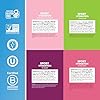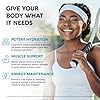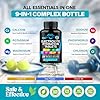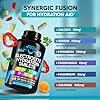High-density lipoprotein (HDL) is commonly known as “good cholesterol.” HDL removes cholesterol from atherosclerotic plaques from the arteries (cholesterol efflux) and returns them to the liver for elimination (reverse cholesterol transport).
The effects of high levels of HDL result in improved blood supply to all organs and the prevention of cardiovascular diseases.
Cardiovascular Diseases (CVD) include heart attacks, strokes, aortic aneurysms and aortic dissection, arrhythmias, atrial fibrillation, and peripheral artery disease.
HDL increasing Medicines
Many studies have shown that high HDL levels prevent heart attacks and strokes. Because of that, drug companies made prescription medicines that can increase HDL. The most common are niacin, statins, and fibrates. O
Omega-3 fatty acids are popular over-the-counter supplements that also increase HDL. Niacin is nicotinic acid or vitamin B3.
Fibrates include
- Clofibrate – Atromid-S®
- Fenofibrate – TriCor®, Fibricor®, Lofibra®
- Gemfibrozil – Lopid®
- Rosuvastatin – Crestor®, Ezallor®
- Atorvastatin – Lipitor®
- Pitavastatin – Nikita®, Livalo®, Zypitamag®, Nikita®
- Simvastatin – Zocor®, Flolipid®
- Pravastatin – Pravachol®
- Lovastatin – Mevacor®, Altoprev®, Altocor®
- Fluvastatin – Lescol XL®
- Cerivastatin – Baycol®
Research about niacin, fibrates, and statins has shown that they increase HDL levels. However, not all raise the beneficial HDL.
Statins and niacin increase the good large HDL particles, but fibrates raise the bad small HDL.
Only large HDL helps remove cholesterol from the arteries. Small HDL does not. Learn more about it at Exercise Increases the Real Good HDL and Apolipoproteins.
Statins, fibrates, and niacin have mixed effects on HDL functions and properties like cholesterol efflux and anti-inflammatory and anti-oxidant activities.
Below are the summary findings from Gomaraschi et al.’s, Effects of established hypolipidemic drugs on HDL concentration, subclass distribution, and function regarding the effectiveness of the HDL in people taking statins, fibrates, and niacin in thinning cholesterol from atherosclerosis (cholesterol efflux).
Cholesterol Efflux Capacity Comparison
Overall, the impact of statin therapy on HDL Cholesterol Efflux Capacity does not appear to be substantial, in agreement with the modest effect of statins on HDL-C concentration and on HDL subclass distribution.[1]
Overall, studies on the ability of fibrates to modulate HDL cholesterol efflux capacity seem not consistent, likely due to the different cell models used in the different studies and also to the different types of patients.[1]
Taken together, available data on the effect of niacin on the HDL-mediated ability to promote cell cholesterol efflux show modest effects on the pathways involving large HDL, in agreement with the changes observed on HDL particles.[1]
Gomaraschi et al. tabulated the effects of the statins, fibrates, and niacin on HDL levels and functionality below.

All-cause and Cardiovascular Mortality
All-cause mortality is death due to any cause. Cardiovascular deaths include heart attacks, strokes, and other CVD diseases.
The best measure of an intervention like exercise or a drug is its actual effect on the person doing or taking it. Does it make the person healthy overall? Do the side effects result in a worse outcome? Did it prevent cardiovascular disease and death?
It means nothing if a person has low cholesterol and high HDL but dies at 60 of a heart attack.
Exercise increases Good HDL and Lowers All-Cause Deaths
Recently, I published Exercise Increases the Real Good HDL and Apolipoproteins. In it, I discussed how exercise increases large HDL and decreases cardiovascular disease-related deaths.
Many studies have shown that physical activity prolongs life. I discussed those studies in Physical Activity Prolongs Life. The reasons are presented in — How Does Exercise Prolong Life?
The next part shows the meta-analyses showing how statins, niacin, fibrates, and omega-3 fatty acids affect cardiovascular and all-cause mortality.
Statins
Many people are currently taking statins to decrease their total cholesterol and LDL. Statins are recommended aggressively. Even some people with acceptable LDL levels and high HDLs are still instructed by their providers to take statins.
Could the Healthline report that said that some doctors are taking industry payouts be true? Say it isn’t so!
The Multi-Ethnic Study of Atherosclerosis was done to know the impact of statins on LDL, HDL, and triglycerides and their effects on coronary heart diseases, cardiovascular disease, and mortality.[2]
It included 5,280 participants, men and women of various races and ethnicities from the US.
The study found that increasing HDL or decreasing triglycerides in those using statins does not lower cardiovascular or coronary heart disease deaths.
The estimated effect of statins on mortality, CVD and CHD appeared to be independent of their estimated effect on HDL and triglycerides.
Our study provides evidence that the preventive effect of statins on CHD could be attributed in large part to their effect on LDL. [2]
Niacin
The first study about niacin is the AIM-HIGH Trial. The Atherothrombosis Intervention in Metabolic Syndrome With Low HDL/High Triglycerides Trial in 2011 compared combined niacin and simvastatin with simvastatin alone on what can lower cardiovascular-disease-related deaths.[3]
The AIM-HIGH trial was terminated 18 months early when it was evident that extended-release niacin would not be beneficial.
The primary composite outcome of coronary heart disease death, nonfatal myocardial infarction, ischemic stroke, hospitalization for acute coronary syndrome, or symptom-driven coronary/cerebral revascularization occurred in 16.4% of the extended-release niacin group versus 16.2% of the placebo group (p = 0.80).
- Coronary heart disease death: 1.2% versus 1.5%
- Nonfatal myocardial infarction: 5.4% versus 4.7%
- Ischemic stroke: 1.6% versus 0.9%
- Hospitalization for acute coronary syndrome: 3.7% versus 4.0%
- Symptom-driven coronary/cerebral revascularization: 4.7% versus 5.1%, respectively, for extended-release niacin versus placebo.
It concludes
Among patients with established (non-acute) vascular disease with optimally treated LDL-C, and low HDL-C, the addition of extended-release niacin was not beneficial.
This therapy was effective at raising HDL-C; however, adverse cardiovascular events were not reduced.
Moreover, there was a small (numerical) excess in ischemic strokes.
AIM-HIGH Trial [3]
The second is a 2017 Cochrane meta-analysis of 23 Randomized-controlled trials included 39,195 participants about niacin [4] found that,
Moderate- to high-quality evidence suggests that niacin does not reduce mortality, cardiovascular mortality, non-cardiovascular mortality, the number of fatal or non-fatal myocardial infarctions, nor the number of fatal or non-fatal strokes but is associated with side effects.
Benefits from niacin therapy in the prevention of cardiovascular disease events are unlikely.[4]
The third is a meta-analysis of 39 trials that included 117,411 patients and studied the effects of niacin, fibrates, and CETP inhibitors on cardiovascular outcomes.
The three are known to be highly effective agents for increasing HDL. The findings showed that,
Neither niacin, fibrates, nor CETP inhibitors reduced all-cause mortality, coronary heart disease mortality, myocardial infarction, or stroke in patients treated with statins. [5]
Fibrates
Fibrates decrease triglycerides and increase HDL.
Jun et al. conducted a meta-analysis of 18 trials involving 45,058 participants on the effect of fibrates on cardiovascular risk.
Result: We noted no effect of fibrate therapy on the risk of all-cause mortality, cardiovascular mortality, sudden death, or non-vascular mortality. [6]
Omega-3 supplementation
Omega-3 fatty acids are over-the-counter nutritional supplements. I decided to include them here because they are marketed to increase HDL and lower triglycerides.
Omega-3 fatty acids are fatty acids that are an indispensable part of cell membranes. The body needs them but, at the same time, does not produce them. Hence, they are considered essential in the diet.
There are three main types of omega-3 fatty acids:
- EPA (eicosapentaenoic acid)
- DHA (docosahexaenoic acid)
- ALA (alpha-linolenic acid)
EPA and DHA are found in fish, while ALA is sourced from plants.
A meta-analysis of 14 randomized, double-blind, placebo-controlled trials involving 20,485 patients from 2012 with a history of cardiovascular disease showed,
Supplementation with omega-3 fatty acids did not reduce the risk of overall cardiovascular events, all-cause mortality, sudden cardiac death, myocardial infarction, congestive heart failure, or transient ischemic attack and stroke.
Our meta-analysis showed insufficient evidence of a secondary preventive effect of omega-3 fatty acid supplements against overall cardiovascular events among patients with a history of cardiovascular disease. [7]
Their findings are in line with another meta-analysis from 2012. This time, 20 studies of 68,680 patients were included.
Overall, omega-3 PUFA supplementation was not associated with a lower risk of all-cause mortality, cardiac death, sudden death, myocardial infarction, or stroke based on relative and absolute measures of association. [8]
And just in case something changed through the years regarding the effect of omega-3s on cardiovascular outcomes, I searched and found a January 2023 review.
Sheratt et al. looked at the different formulations of omega-3 fatty acids and found no reduction in cardiovascular events.
Among high-risk patients in contemporary care, mixed n3-FA (omega-3) formulations showed no reduction in cardiovascular events.
One possible reason omega-3 supplementation does not reduce cardiovascular events is that the fatty acids in some supplements come from farmed fish fed with omega-6 fatty acids. The result is that omega-6 fatty acids were added to the diet.
Conclusion
I will end with a quote from Jacques Genest from his commentary, “High-density lipoprotein and residual cardiovascular risk: De minimis non curat medicus or the COURAGE to be SMART?
In his summary, he said
There is little support from clinical trials to raise HDL-C pharmacologically.
To date, the trial evidence is, at best neutral; at worst, there is evidence of harm.[10]
Take Away Message
Exercising rather than depending on medications to increase large HDL and reduce cardiovascular risk is safer, more effective, and less expensive.
Don’t Get Sick!
Stay current by subscribing. Feel free to share and like.
If you find value in this website, please consider buying me a coffee to show your support.
Follow me on Gettr, Truth Social, Gab, Parler, Twitter, Facebook, Follow, and Telegram.
References:
- Gomaraschi M, Adorni MP, Banach M, Bernini F, Franceschini G, Calabresi L. Effects of established hypolipidemic drugs on HDL concentration, subclass distribution, and function. Handb Exp Pharmacol. 2015;224:593-615. doi: 10.1007/978-3-319-09665-0_19. PMID: 25523003.
- Talbot D, Delaney JAC, Sandfort V, Herrington DM, McClelland RL. Importance of the lipid-related pathways in the association between statins, mortality, and cardiovascular disease risk: The Multi-Ethnic Study of Atherosclerosis. Pharmacoepidemiol Drug Saf. 2018 Apr;27(4):365-372. doi: 10.1002/pds.4393. Epub 2018 Feb 6. PMID: 29405501; PMCID: PMC5937846.
- AIM-HIGH Investigators; Boden WE, Probstfield JL, Anderson T, Chaitman BR, Desvignes-Nickens P, Koprowicz K, McBride R, Teo K, Weintraub W. Niacin in patients with low HDL cholesterol levels receiving intensive statin therapy. N Engl J Med. 2011 Dec 15;365(24):2255-67. doi: 10.1056/NEJMoa1107579. Epub 2011 Nov 15. Erratum in: N Engl J Med. 2012 Jul 12;367(2):189. PMID: 22085343.
- Schandelmaier S, Briel M, Saccilotto R, Olu KK, Arpagaus A, Hemkens LG, Nordmann AJ. Niacin for primary and secondary prevention of cardiovascular events. Cochrane Database Syst Rev. 2017 Jun 14;6(6): CD009744. Doi: 10.1002/14651858.CD009744.pub2. PMID: 28616955; PMCID: PMC6481694.
- Keene D, Price C, Shun-Shin M J, Francis D P. Effect on cardiovascular risk of high-density lipoprotein targeted drug treatments niacin, fibrates, and CETP inhibitors: meta-analysis of randomised controlled trials including 117 411 patients BMJ 2014; 349 :g4379 doi:10.1136/bmj.g4379
- Jun et al. Effects of fibrates on cardiovascular outcomes: a systematic review and meta-analysis. Lancet. Volume 375, Issue 9729, 29 May–4 June 2010, Pages 1875-1884.
- Kwak SM, Myung SK, Lee YJ, Seo HG; Korean Meta-analysis Study Group. Efficacy of omega-3 fatty acid supplements (eicosapentaenoic acid and docosahexaenoic acid) in the secondary prevention of cardiovascular disease: a meta-analysis of randomized, double-blind, placebo-controlled trials. Arch Intern Med. 2012 May 14;172(9):686-94. doi: 10.1001/archinternmed.2012.262. PMID: 22493407.
- Rizos EC, Ntzani EE, Bika E, Kostapanos MS, Elisaf MS. Association between omega-3 fatty acid supplementation and risk of major cardiovascular disease events: a systematic review and meta-analysis. JAMA. 2012 Sep 12;308(10):1024-33. doi: 10.1001/2012.jama.11374. PMID: 22968891.
- Sherratt SCR, Libby P, Budoff MJ, Bhatt DL, Mason RP. Role of Omega-3 Fatty Acids in Cardiovascular Disease: the Debate Continues. Curr Atheroscler Rep. 2023 Jan;25(1):1-17. doi: 10.1007/s11883-022-01075-x. Epub 2022 Dec 29. PMID: 36580204; PMCID: PMC9834373.
- Genest, Jacques. “High-density lipoprotein and residual cardiovascular risk: De minimis non curat medicus or the COURAGE to be SMART?” Journal of the American College of Cardiology 62 20 (2013): 1842-4 .
© 2018 – 2023 Asclepiades Medicine, L.L.C. All Rights Reserved
DrJesseSantiano.com does not provide medical advice, diagnosis, or treatment
As an Amazon Associate, I earn from qualifying purchases.
Nuun Sport Electrolyte Tablets for Proactive Hydration, Mixed Flavors, 4 Pack (40 Servings)
23% OffNuun Hydration Strawberry Lemonade, 10 Tablets
5% OffDiscover more from Don't Get Sick!
Subscribe to get the latest posts sent to your email.





























